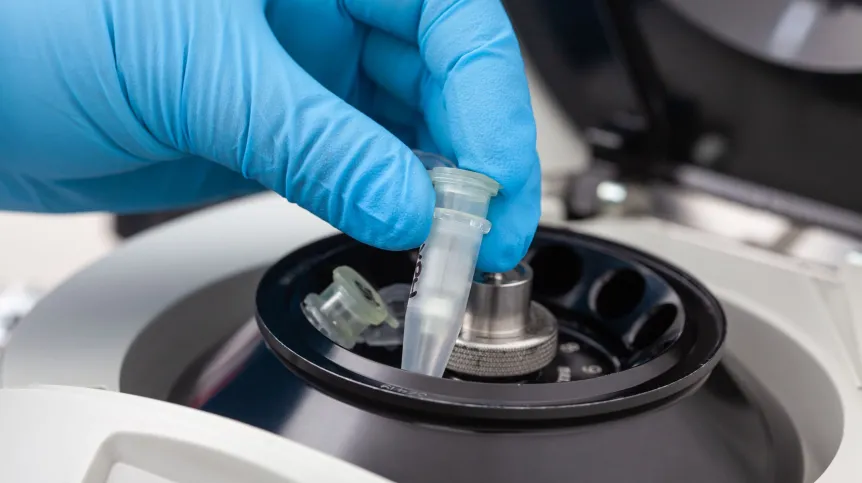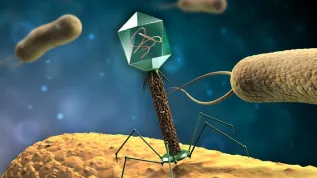
Until now, the consensus was that any effective cellular response to dsRNA would inevitably lead to inflammation. However, research conducted by a team of scientists, including researchers from the University of Warsaw, has shown that that the matter is much more complicated. Cells can respond to threats without triggering an inflammatory reaction.
According to the co-authors of the publication in the journal Science Advances (DOI:10.1126/sciadv.ads6498), the discovery sheds new light on the subtle defence strategies of the human body, which may influence the development of mRNA vaccines and help in the design of new antiviral therapies.
Double-stranded RNA (dsRNA) is a molecule naturally present in human cells, but its excess usually signals a threat such as a viral infection. That is why our cells have evolved complex mechanisms to detect dsRNA and initiate an immune response.
Until now, the consensus was that any effective cellular response to this molecule would inevitably laed to inflammation. However, research conducted by a team of scientists led by Paweł Sikorski, PhD, from the Faculty of Biology of the University of Warsaw, in collaboration with the Medical University of Białystok and the Technical University of Munich, has shown that this is not true; cells can respond to dsRNA without triggering an inflammatory reaction.
The authors of the study explain that there are two main mechanisms by which human cells respond to dsRNA. The first is dependent on RIG-I-like receptors (RLRs), which - by detecting characteristic features of RNA ends - trigger a cascade of signals leading to the production of interferons and cytokines, i.e. compounds responsible for inflammation.
The second, the second defence pathway does not require the activation of an inflammatory response. It is based on PKR and OAS/RNase L proteins. Their task is to slow down the cell's metabolism and destroy the viral RNA before it can reproduce. This mechanism is probably used by the cell when it 'considers' that there is no need to warn neighbouring cells about the threat, because the detected dsRNA comes from intracellular processes and not the presence of a virus.
'Our research has shown that these two mechanisms can function independently of each other. This means that a cell can inhibit its own growth and eliminate viral RNA without triggering a full inflammatory response. This discovery suggests that we have more subtle defence strategies that do not always require the activation of energy-consuming inflammatory processes', Sikorski explains.
The key element that determines whether RNA is considered dangerous is the structure of its 5' end (the so-called cap). Different versions of this cap can occur in the RNA of viruses and human cells, depending on the number of so-called methylations. Some of them are recognized by cells as 'foreign' and trigger a strong inflammatory response, others are interpreted as 'self' and then the inflammatory response is not triggered, even if the RNA is double-stranded. Why have viruses learned to modify their RNA to resemble the host's RNA?
In the experiments, scientists from the University of Warsaw studied the impact of three RNA modifications commonly found in humans - N6-methyladenosine (m6A), 5-methylcytosine (m5C), and pseudouridine (Ψ) - on the immunogenicity of dsRNA.
They found that these modifications alone do not significantly affect dsRNA ability to trigger an immune response. Only the presence of6A weakened the OAS/RNase L-dependent pathway, likely by loosening the structure of dsRNA, as a result of which it became less visible to OAS proteins.
The study therefore shows that that the structure of double-stranded RNA plays a crucial role in recognizing a threat. The OAS/RNase L- and PKR-dependent pathways are activated primarily by the presence of dsRNA itself, regardless of its specific modifications. In contrast, RLR receptors, which initiate inflammation, are more sensitive to the chemical groups at the ends of dsRNA.
Interestingly, cells can recognize dsRNA even when RLR receptors are not activated. This suggests that cellular defence mechanisms are more complex than previously thought and may function selectively depending on the context of the threat.
The findings of the team from the University of Warsaw have implications not only for basic biology, but also for designing new antiviral therapies and the development of RNA-based technologies, such as mRNA vaccines. Knowledge of how RNA modifications affect its recognition by cells can be used to create safer preparations that do not trigger an undesirable inflammatory reaction.
'We have demonstrated that dsRNA recognition in human cells can occur in different ways - with or without inflammation. This is an important step in understanding how our immune system works and how these mechanisms can be manipulated for therapeutic purposes', Sikorski concludes.
Katarzyna Czechowicz (PP)
kap/ zan/













